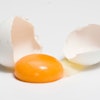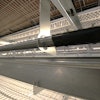
Coccidia remain a perennial problem in floor-raised broilers. As one veterinarian with knowledge on the topic commented to me, zero tolerance is not possible, even with medications. What is wanted is a level of unavoidable infection that does not cause appreciable damage, affecting animal performance.
With the advent of no-antibiotics-ever (NAE) production in the U.S., alternative ingredients are being investigated – with more failure than success, I must admit. But research is just that and, with enough effort, all such problems eventually find their solution.
One different approach taken by researchers at University of Illinois is that of re-evaluating the composition of the basal feed – that is, before thinking about additives. This is a fresh approach, as it places the focus where it really needs to be: the basics before we work on additives. In a recent report, broilers challenged with coccidia were found to have an increased requirement for lipids (energy) in their diets to partially overcome the adverse effects of coccidia infection.
Previous research from the same laboratory demonstrated that infected birds suffer from impaired lipid digestion and absorption. Thus, it makes sense to offer them more oil/fat through their diet to make up for the reduced availability. But does it make sense from a practical point of view? Let’s see the numbers.
The research demonstrated a need for 9% dietary lipids. With most broiler diets containing 2-3% lipids, going so high with the addition of any lipids source is not impossible, but rather impractical. At the same time, it is prohibitively expensive, at least with today’s prices for oils and fats. On the other hand, adding at least some extra oil/fat in diets for broiler suffering from coccidia infection will help them recover some of the lost performance. In the end, it is an act of balance between feed cost, lost performance and the overall cost of the disease.

















